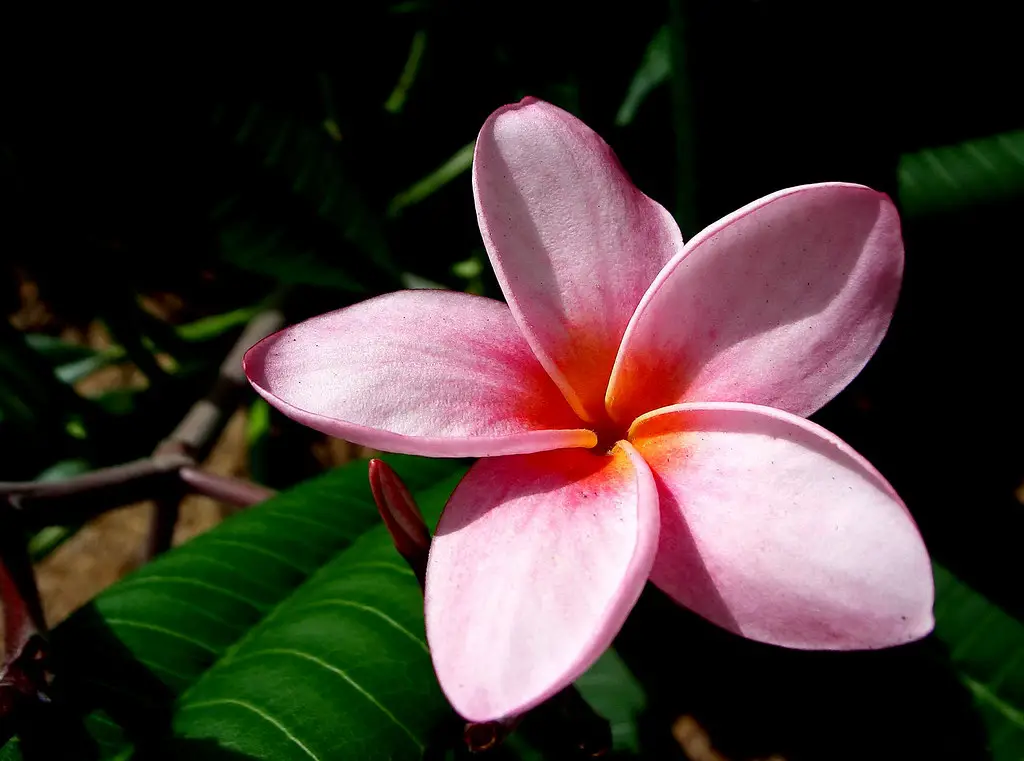Plumeria, also known as Frangipani, is a beautiful tropical plant renowned for its fragrant, vibrant flowers. These flowers come in various colors, including pink, yellow, white, and red, and they are commonly used in Hawaiian leis. Plumeria’s intoxicating scent and breathtaking blossoms make it a favored plant in gardens and landscapes around the world, especially in tropical and subtropical regions.
Though native to Central America, Mexico, the Caribbean, and South America, Plumeria has been introduced to various parts of the world, including Hawaii, where it has become an iconic symbol of island life. These plants can grow into large shrubs or small trees and often display a robust, branching structure.
Cultivating Plumeria is a joy for many gardeners, not only for the aesthetic beauty but also for the relatively straightforward care it requires. Whether grown in the ground or in pots, Plumeria can flourish with the right attention and conditions, providing a tropical touch to any space.
| Aspect | Details |
|---|---|
| Common Names | Plumeria, Frangipani, Lei Flower, Temple Tree |
| Botanical Name | Plumeria spp. |
| Family | Apocynaceae |
| Plant Type | Shrub or Small Tree |
| Mature Size | 10-25 feet tall, 10-25 feet wide |
| Sun Exposure | Full Sun |
| Soil Type | Well-drained, Sandy Soil |
| Hardiness Zones | 9-11 |
| Native Area | Central America, Mexico, Caribbean, South America |
Plumeria Care
Plumeria requires a combination of full sun, well-drained soil, and adequate watering to thrive. It’s a plant that loves warmth and should be protected from frost and extreme cold. During the growing season, regular watering and feeding will promote healthy growth and abundant flowering.
In regions where Plumeria can be affected by cold, it can be grown in containers and moved indoors during winter. Whether grown in the ground or in pots, care should be taken to avoid over-watering and to provide proper nutrition to ensure a healthy plant with vibrant blossoms.
Light Requirement for Plumeria
Plumeria thrives best in full sun, requiring at least 6 hours of direct sunlight per day. Insufficient sunlight can lead to poor blooming and leggy growth. It’s important to choose a location that provides ample light to encourage abundant flowering.
Soil Requirements for Plumeria
Plumeria prefers a well-drained, sandy soil that provides good aeration to the roots. Heavy or clay soils can lead to root rot and should be avoided. If planting in containers, using a cactus or succulent mix is often a good choice.
Water Requirements for Plumeria
Watering Plumeria requires a balanced approach. While it needs regular watering during the growing season, allowing the soil to dry slightly between waterings is crucial. Over-watering can lead to root rot. In winter, when the plant is dormant, water should be reduced significantly.
Temperature and Humidity
Plumeria loves warm temperatures but can tolerate occasional cool spells. Ideally, it should be grown in temperatures ranging from 65-80°F (18-27°C). It’s not particularly sensitive to humidity, but very dry conditions may cause leaf-tip browning.
Fertilizer
A balanced fertilizer with a higher phosphorus content will support Plumeria’s flowering. Fertilize every 2-3 weeks during the growing season using a water-soluble or slow-release granular fertilizer.
Pruning Plumeria
Pruning helps in shaping the Plumeria and encouraging branching. It’s best done in late winter or early spring before the new growth begins. Removing dead or diseased branches and spent flowers can be done anytime.
Propagating Plumeria
Plumeria can be easily propagated through cuttings. Allow the cut end to dry for a few days before planting in well-drained soil. Cuttings can be taken in spring or summer and usually root within a few weeks.
How To Grow Plumeria From Seed
Growing Plumeria from seed is less common but possible. Seeds can be sown in a well-draining soil mix and kept warm and moist. Germination may take a few weeks, and patience is required as seedlings develop slowly.
Common Pests & Plant Diseases
Mealybugs
Small insects that can be controlled using insecticidal soap.
Spider Mites
Tiny mites that can be treated with miticides or natural predators.
Rust
A fungal disease causing orange spots; treat with fungicide.
Common Problems With Plumeria
Leaf Yellowing
Often caused by over-watering or poor drainage. Adjust watering habits and ensure proper soil.
Failure to Bloom
May be due to insufficient light or improper fertilization. Ensure full sun and use a balanced fertilizer.
Root Rot
A result of over-watering or poor soil drainage. Correct watering and use well-drained soil.
Pro Tips
- Plant Plumeria with other tropical plants for a vibrant tropical garden theme.
- Consider using Plumeria in poolside landscapes as it adds a luxurious touch.
- Avoid planting Plumeria in areas with strong winds as the branches can be quite brittle.
- Plumeria’s latex sap can irritate the skin; handle with care, especially when pruning.
- Cultivate patience; Plumeria may take several years to bloom when grown from seed or cuttings.




